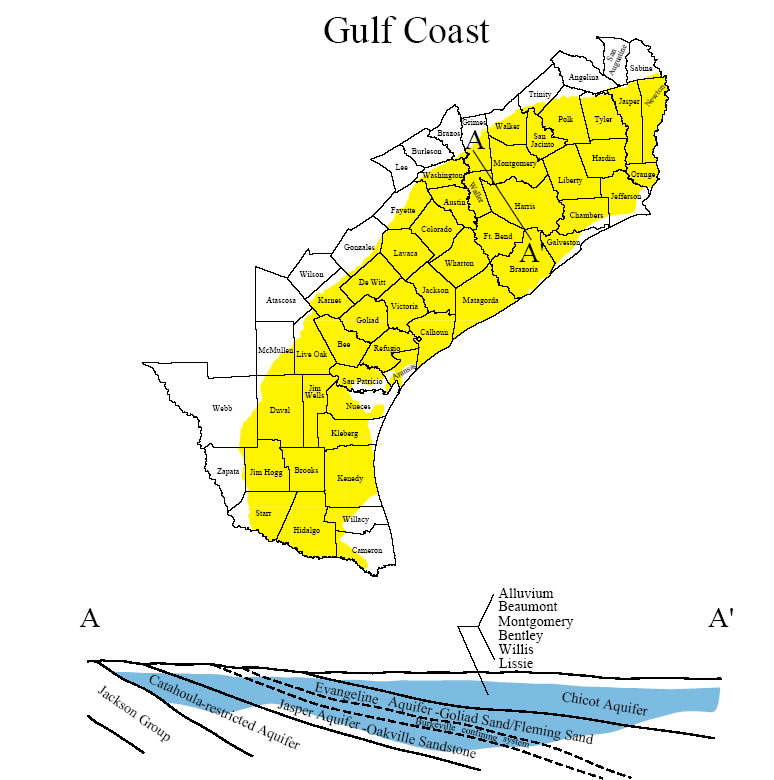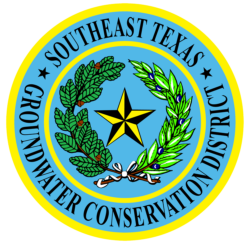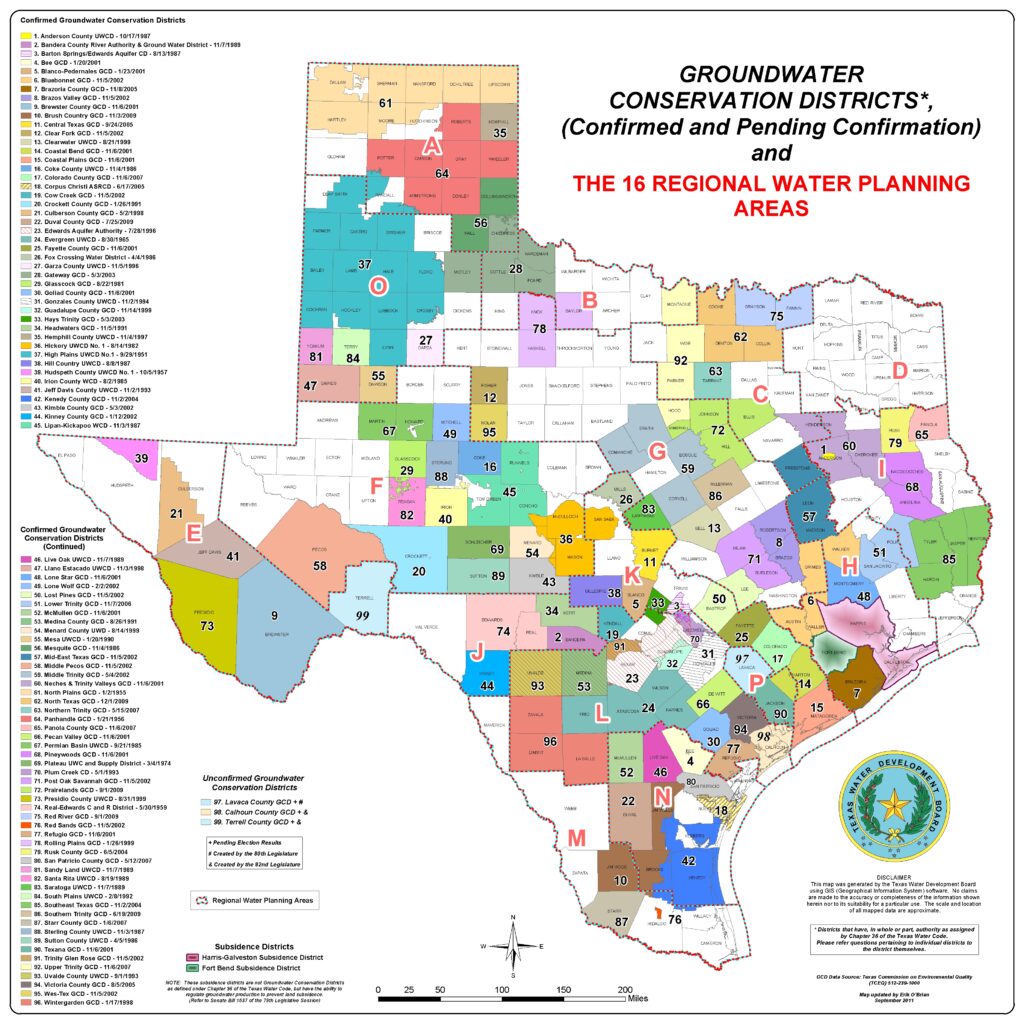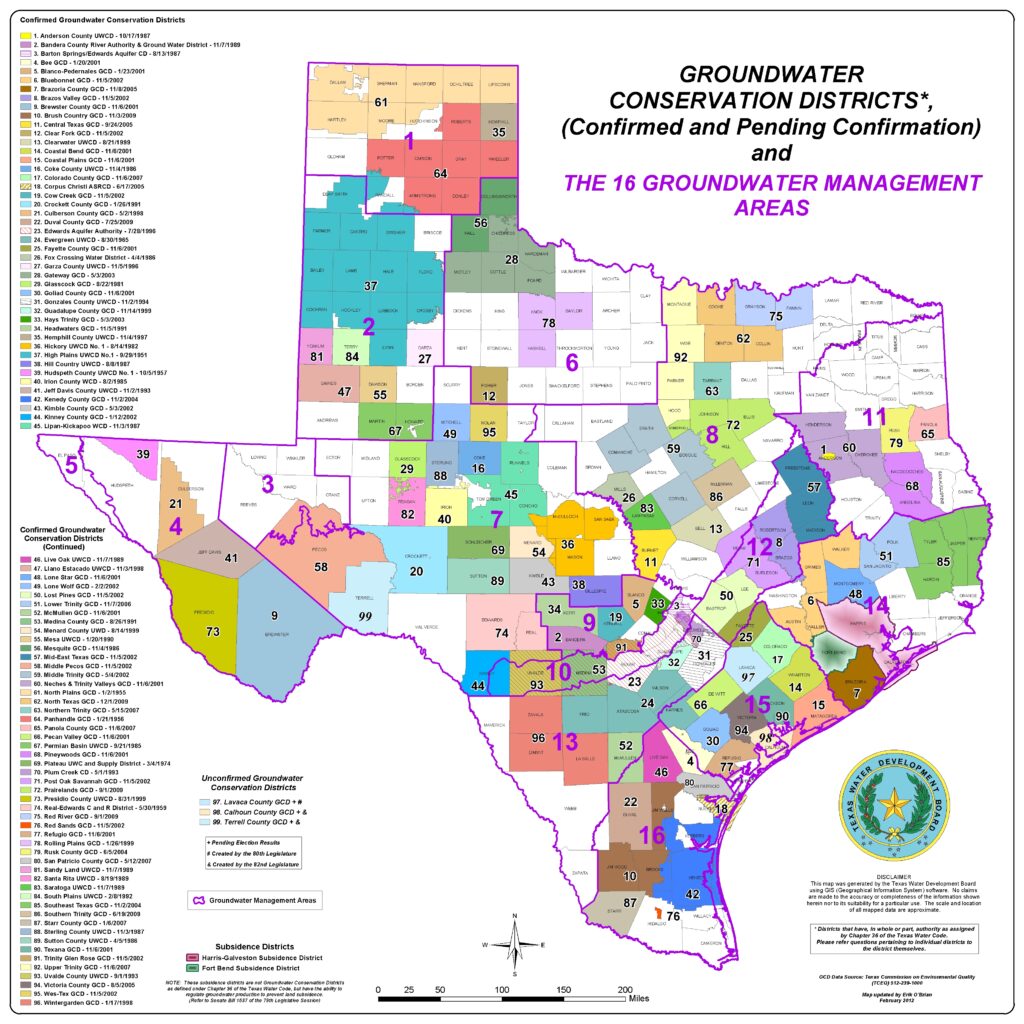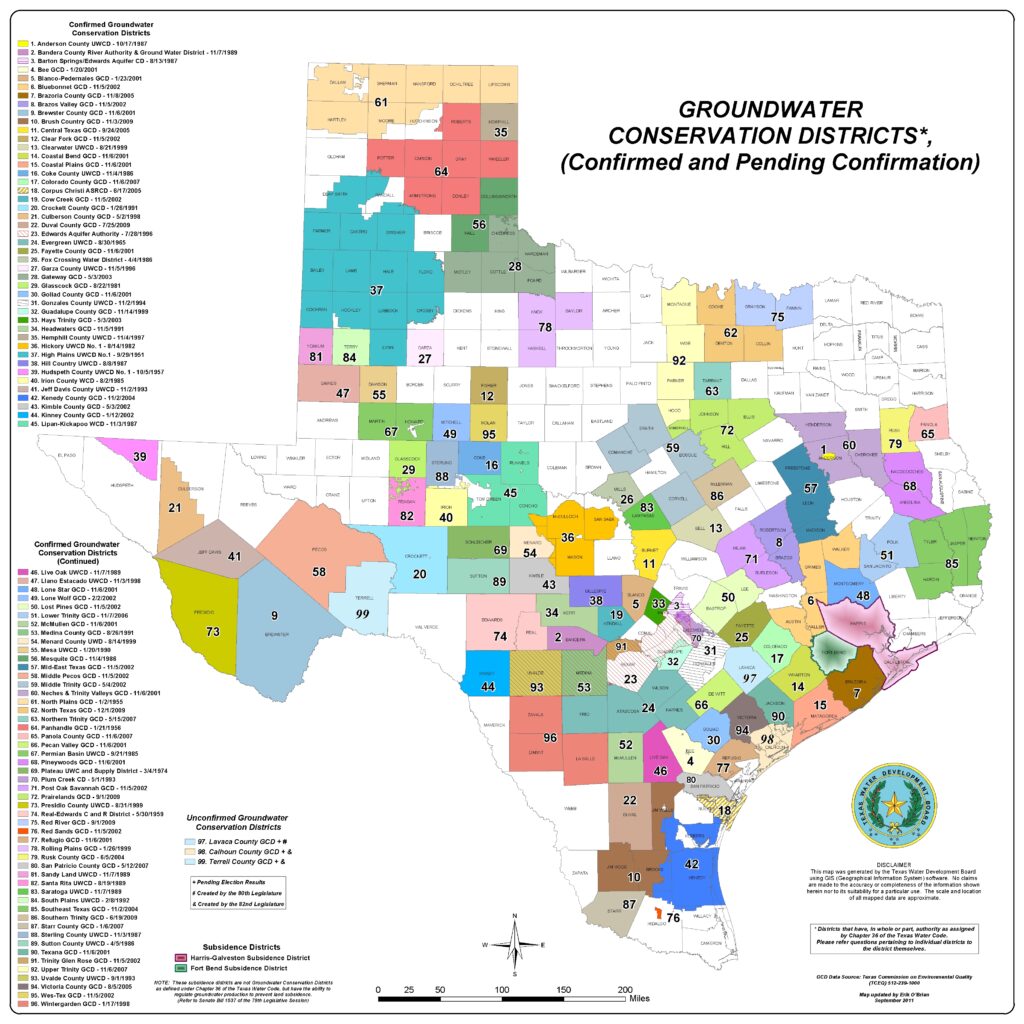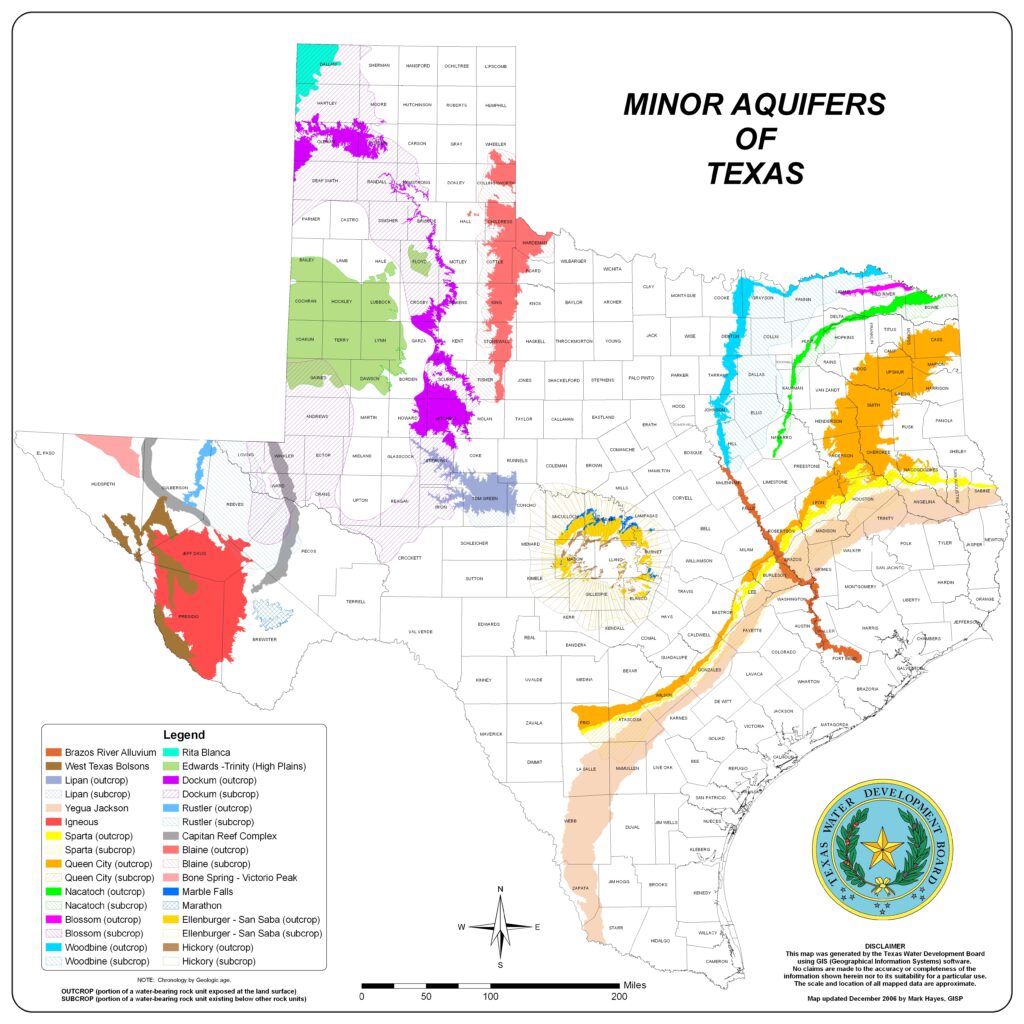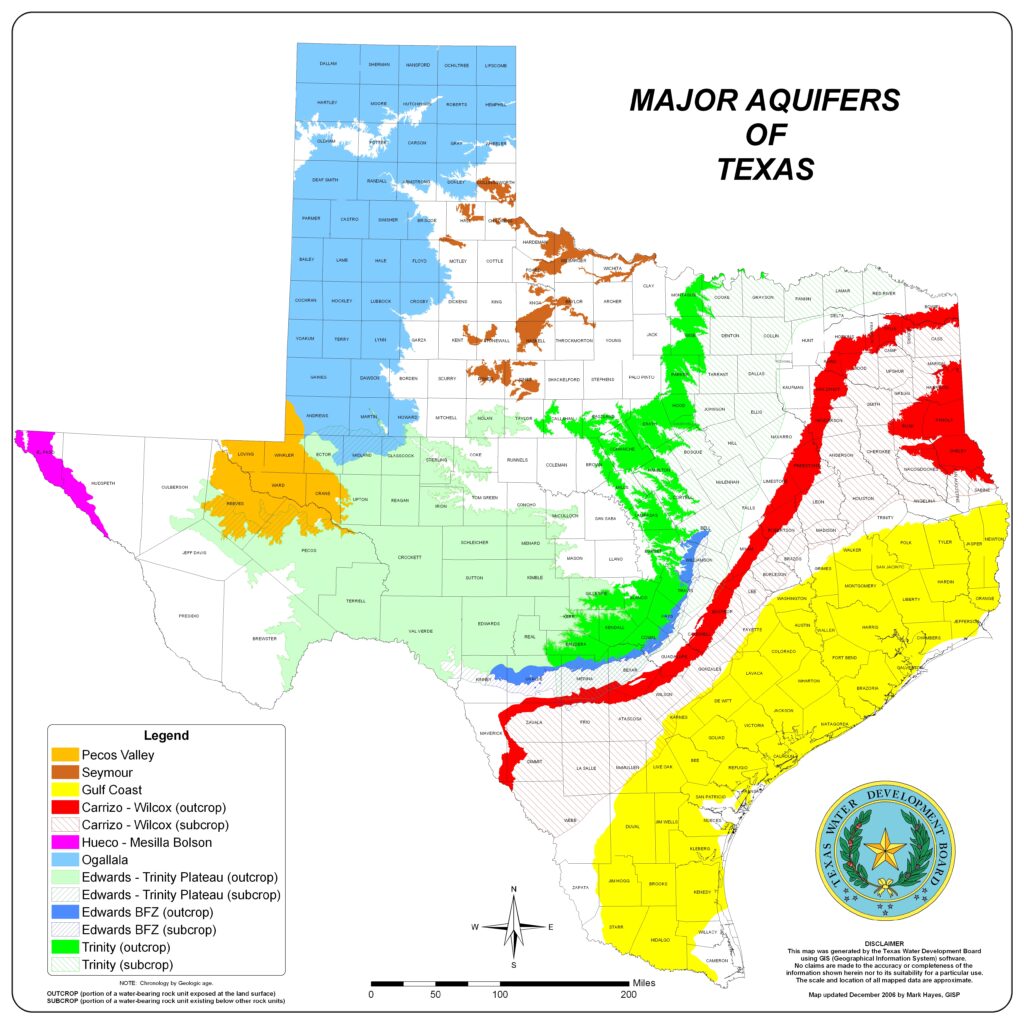Water quality is generally good in the shallower portion of the aquifer. Ground water containing less than 500 mg/l dissolved solids is usually encountered to a maximum depth of 3,200 feet in the aquifer from the San Antonio River Basin northeastward to Louisiana. From the San Antonio River Basin southwestward to Mexico, quality deterioration is evident in the form of increased chloride concentration and saltwater encroachment along the coast. Little of this ground water is suitable for prolonged irrigation due to either high salinity or alkalinity, or both. In several areas at or near the coast, including Galveston Island and the central and southern parts of Orange County, heavy municipal or industrial pumpage had previously caused an updip migration, or saltwater intrusion, of poor-quality water into the aquifer. Recent reductions in pumpage here have resulted in a stabilization and, in some cases, even improvement of ground-water quality.
Years of heavy pumpage for municipal and manufacturing use in portions of the aquifer have resulted in areas of significant water-level decline. Declines of 200 feet to 300 feet have been measured in some areas of eastern and southeastern Harris and northern Galveston counties. Other areas of significant water-level declines include the Kingsville area in Kleberg County and portions of Jefferson, Orange, and Wharton counties. Some of these declines have resulted in compaction of dewatered clays and significant land surface subsidence. Subsidence is generally less than 0.5 foot over most of the Texas coast, but has been as much as nine feet in Harris and surrounding counties. As a result, structural damage and flooding have occurred in many low-lying areas along Galveston Bay in Baytown, Texas City, and Houston. Conversion to surface-water use in many of the problem areas has reversed the decline trend.

